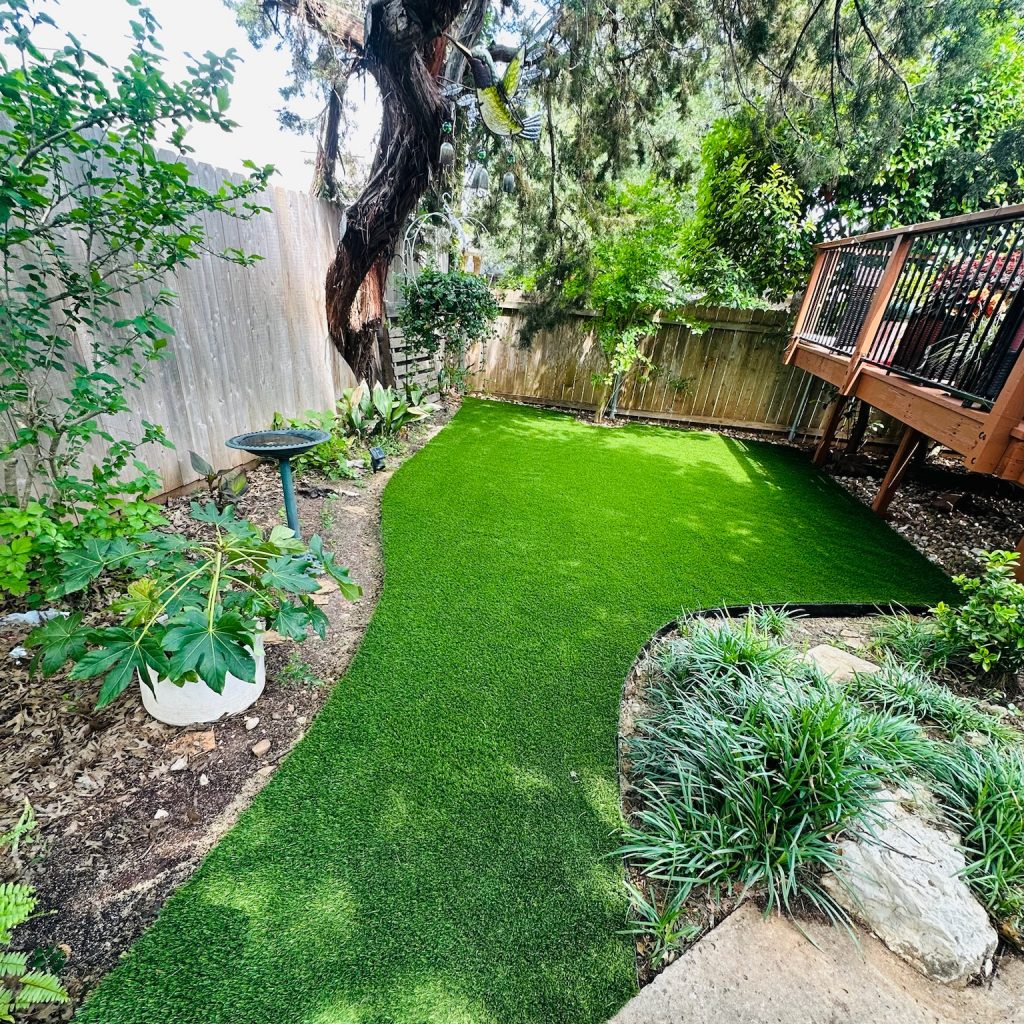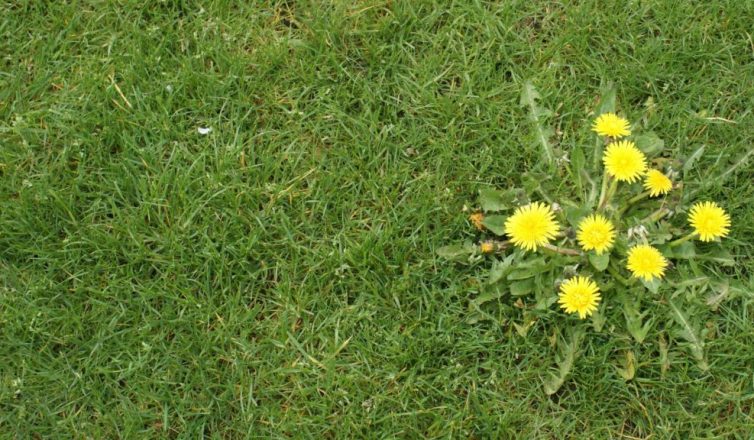Artificial grass is famous for being low-maintenance. No watering. No mowing. No reseeding. But one of the biggest questions we hear from homeowners considering turf is: Does artificial grass prevent weeds?
The truth is, artificial turf significantly reduces weed growth, but it doesn’t eliminate it entirely. While far less common than in natural lawns, occasional weeds can still find a way through if conditions allow. Let’s explore how artificial turf resists weeds, what might still pop up, and how Lone Star Turf’s expert installation helps you maintain a lush, green, and nearly weed-free lawn.
How artificial grass prevents weeds (and why traditional laws can’t)
Weeds thrive in natural lawns because they have everything they need to grow: exposed soil, sunlight, water, and nutrients. Traditional grass offers the perfect home for invasive weed species like crabgrass, dandelions, clover, and thistle. And once weeds settle in, they often spread rapidly, choking out your lawn, attracting pests, and creating an unsightly mess.
Artificial grass, by contrast, creates an environment that’s hostile to weed growth. Installed over a compacted aggregate base, synthetic turf removes the nutrient-rich soil that weeds rely on. There’s no irrigation or fertilization to feed stray seeds, and high-quality turf blades block sunlight from reaching the ground below, cutting off another key ingredient weeds need to survive.
This weed resistance brings additional benefits beyond a cleaner lawn. Because weeds often attract insects and pests like ants, mosquitos and beetles, reducing them helps keep your yard more enjoyable and pest-free. With no standing water from sprinklers or soggy soil to draw in bugs, artificial turf helps discourage infestations and minimizes yard maintenance even further.
Ultimately, synthetic turf acts as a physical and environmental barrier against unwanted plant growth, creating a cleaner, safer, and more reliable outdoor space.
How Lone Star Turf prevents weed problems before they start
We’ve installed thousands of weed-resistant lawns across Texas, and here’s what we do differently:
- Excavation and Root Removal: We dig down several inches to remove any existing organic matter and root systems.
- Compacted Base Layer: We replace dirt with a thick, tightly compacted base layer of crushed aggregate to eliminate growth space.
- Weed Barrier Installation: A high-quality geotextile weed membrane is layered beneath the turf. This barrier blocks sunlight and physically prevents weeds from sprouting through the surface, while still allowing for proper drainage.
- Precision Seam Work: Poorly joined turf rolls are a weed’s best friend. Our team uses commercial-grade seaming techniques to eliminate gaps.
The result? A tough, durable lawn that doesn’t invite unwanted growth.

Can weeds still grow in artificial grass?
While rare, weeds can still appear in certain conditions. For example, they may creep in at the edges or seams of the turf if the borders are not properly sealed. Windblown seeds can settle into infill or surface dust, and occasionally, weeds may emerge through drainage gaps or poorly installed joints. Fortunately, these weeds typically have shallow roots and are easy to pull by hand.
If you’re installing turf yourself, beware: skipping base prep or choosing cheap materials could mean you’re pulling weeds within a year. Investing in professional installation with the experts at Lone Star Turf pays off with fewer issues and longer-lasting results.
How to maintain a weed-free turf lawn
Even the best turf systems benefit from a little regular upkeep. Luckily, maintaining synthetic grass is simple and far less demanding than a natural lawn:
- Clear Debris Weekly: Use a leaf blower or plastic rake to remove leaves, twigs, and dirt. This prevents buildup that could trap moisture or organic material, which weeds love.
- Rinse Occasionally: Hose down your turf every few weeks to remove dust, pollen, and pet residues, especially during dry spells or heavy pollen seasons.
- Spot-Treat Early: If you notice a weed sprouting, remove it right away. Most will be surface-level and can be plucked easily. For persistent ones, use a turf-safe weed treatment.
- Brush High-Traffic Areas: For spots where turf fibers may become matted (like under patio furniture or frequent footpaths), brush the blades gently with a stiff-bristle broom to keep them standing upright.
Sticking to this easy maintenance routine helps your turf stay clean, vibrant, and virtually weed-free year-round.
FAQs About Weeds and Artificial Turf
Q: Will weeds damage my turf?
A: Not likely. Most weeds that show up can’t root deeply in artificial grass and are easy to remove.
Q: Do I still need a weed barrier?
A: Yes. It’s a crucial part of long-term weed prevention.
Q: What if I have pets? Will their waste cause weeds?
A: Not if your turf is installed correctly. Pet infill and proper drainage keep your turf clean and healthy.
Say goodbye to weeds—for good
If you’re tired of weeds ruining your yard, artificial turf could be the best decision you make this year. Lone Star Turf offers premium materials, expert installation, and an industry-leading 16-year warranty—because we stand by our work for the long haul.
Get your weekends back. Request your free quote today with Lone Star Turf and say goodbye to weeds for good.
